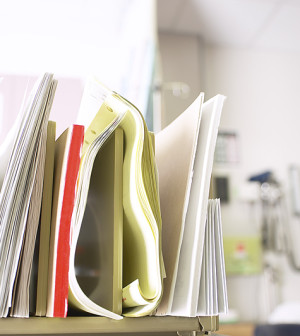- How Daily Prunes Can Influence Cholesterol and Inflammation
- When to Take B12 for Better Absorption and Energy
- Epsom Salts: Health Benefits and Uses
- See What Saffron Can Do for Sleep and Heart Health
- 6 Common Mistakes to Avoid Before Your Physical
- Can Sweating Really Help You Beat a Cold?
- Strengthening Your Relationship: Practical Strategies
- Skip Storing This Everyday Product in the Fridge Door
- Green Tea + B3 Pairing May Boost Brain Health
- Navigating Your Midlife Crisis: Embracing New Possibilities
Kids’ Hemophilia Drugs a Big Part of State Medicaid Spending

Treatment costs for one childhood illness, hemophilia, may use up a big chunk of a state’s Medicaid budget, a new study out of California shows.
The researchers found that treatments for hemophilia — a rare, inherited disorder in which blood does not clot normally — accounted for the largest share of spending on outpatient drugs among publicly insured children in California with serious chronic illnesses.
The study “underscores the potential effect of new, expensive but [effective] pharmaceuticals on public insurance programs for children with chronic illness,” wrote a group led by Sonja Swenson of Stanford University.
Her team published the findings July 28 in the Journal of the American Medical Association.
The researchers tracked 2010-2012 data from more than 34,300 publicly insured children and young adults under the age of 21 in California with serious chronic health problems.
Overall, outpatient pharmacy costs totaled almost $476 million, or 20 percent of total health care costs.
Costs per child for the study period varied widely: From just 16 cents for one patient to nearly a whopping $57 million for drugs for another, unnamed patient. Swenson said her team was “shocked” by the latter amount.
Hemophilia treatment took a big share of outpatient drug costs: 42 percent of spending, according to the study.
One type of therapy, called antihemophilic factor, accounted for 98 percent of spending on children with hemophilia, or 41 percent of total pharmacy spending — even though children treated with antihemophilic factor accounted for just 0.4 percent of all the children in the study.
Antihemophilic factor is a protein that is essential to normal blood clotting and is lacking or deficient in persons having hemophilia A, the authors explained.
The average per-child cost for antihemophilic factor was about $1.3 million over the time span covered by the study.
The next largest percentage of spending was just over 9 percent for central nervous system drugs, with an average amount of $1,869 per child, the researchers reported.
Swenson’s group believes that “antihemophilic factor is highly [effective] and essential in caring for children with hemophilia, putting pressure on public programs” to figure out ways to bring costs down.
More information
The U.S. Centers for Disease Control and Prevention has more about hemophilia.
Source: HealthDay
Copyright © 2026 HealthDay. All rights reserved.










